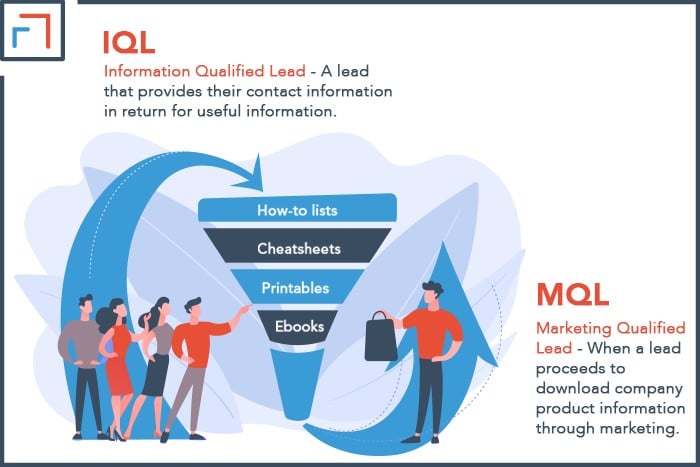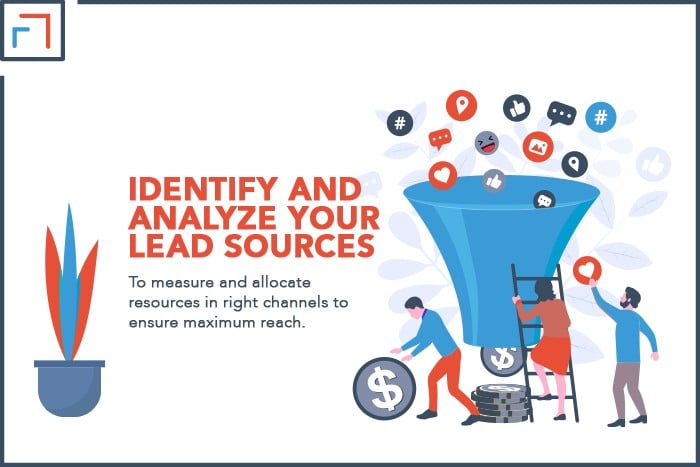Every entrepreneur wishes to see all their leads make it to the bottom of the funnel. Unfortunately, leads drop out along the funnel due to various reasons. As a result, you need to monitor your sales funnel to identify the leakage points and find ways to fix them.
The best way to track a sales funnel is by monitoring how leads convert as they transition through the different stages of the funnel. In addition, collecting and analyzing the right data from each stage of the funnel will determine what is working and what is not.
It can be hard to identify problems in your own sales funnel, so let us show you how to track lead conversions. We’ve also provided a step-by-step process to help you set up your own sales funnel tracking system.
Tracking How Leads Turn Into Conversions
The interests and behaviors of leads shift as they progress down the funnel. By tracking each lead group individually, you can respond to their respective needs.
Below, we will guide you on how leads convert into customers. We’ll also talk about how to track them.
1. Information Qualified Leads (IQLs)
When people first discover your brand, they become information-qualified leads. Thus, they enter the first stage of the sales funnel.
At this point, they are searching for information that will help solve their problems. Since they have not yet decided what they need to buy, they are easy to monitor.
Therefore, you need to provide these people with resources and guidance to address their pain points.
Although not all of them will end up buying, it is worth maximizing your chances of selling to IQLs.
How to Track IQLs?
You need a tracking system that offers quality information and useful advice to track information qualified leads.
For instance, you can use whitepapers or assessment templates where leads submit registration details such as their name, email, or phone number to get access.
Using this content strategy, you can monitor a large number of leads.
Examples of content to offer include:
- How-to lists
- e-Books
- Cheat sheets
- Printables
Once your leads access your shared content, their next course of action will inform you whether they are ready to move to the next stage.
For example, if your IQL wants more than just the freebies, let them know about your brand and how you can assist them.

2. Marketing Qualified Leads (MQLs)
By moving to the next stage, IQLs become marketing-qualified leads. This indicates that you are using successful inbound marketing strategies.
This might include things like call-to-actions to attend webinars or read whitepapers. The more MQLs you have, the better your strategies are.
At this point, MQLs have developed an interest in your products, and your sales team can address their concerns.
How to Track MQLs?
Having engaged your MQLs, you can now track them using your CRM (Customer Relations Management) solutions or tracking software.
In either case, the key is to ensure seamless integration between your sales team and the tools used to ensure strong lead scoring.
Lead scoring analyzes lead actions to assess their readiness to make a purchase. This helps to rank them according to priority.
For example, visiting a products page would increase a lead’s score, while unsubscribing from an email list will diminish their score.
3. Sales Qualified Leads (SQLs)
These are leads who have reached the bottom of the funnel. As opposed to MQLs, SQLs are likely to make a purchase soon.
Now that you have successfully nurtured SQLs to the last stage, your sales team can now engage with them to enhance their willingness to buy.
How to track SQLs?
Remember that these are the kind of leads with the highest closing rate. Therefore, you need to act swiftly while their problem lingers or else they will find another solution.
For instance, a quick call to your hot lead will demonstrate your attentiveness and top-notch customer care.
Here, focus on increasing communication while minimizing content. Making use of your past successful metrics will point you in the right direction.
For example, know when to throw in product demos or talk about prices.
Step-by-step Process for Tracking and Analyzing Conversions
You can start by finding the core problem in your sales funnel. Check out my article on finding sales funnel problems and fixing them.
You can further monitor your leads across all marketing channels to close any loopholes overlooked by lead conversion tracking.
Below are a few steps we have put together to help you get started with tracking your leads.
1. Identify and Analyze Your Lead Sources
Your marketing funnel is comprised of different sources of traffic, such as:
- Social media
- Paid ads
- Backlinks
- Customer referrals
- TV, radio, and billboard ads
- Online and physical events
- Blog articles
- Organic searches
Understanding where your leads come from will help you effectively allocate your marketing budget.
For example, if your social media performs poorly while the rest of the sources are okay, you may want to allocate more resources to social media campaigns.
Use a tracking tool with CRMs or marketing and sales software for effective lead measurement. In addition to accessing lead source data, you can track:
- Number of page visits
- Number of downloads
- Social engagement rates
- Email opens

2. Analyze and Select Lead Tracking Tools
Depending on your business size and available resources, select a suitable tool.
You may decide to use free tools such as Google Sheets, Excel, Google Analytics, or paid tracking software. As a start-up, it’s best to use spreadsheets as you scale your business.
However, spreadsheets are time-consuming due to manual data entry, plus they are susceptible to errors and data manipulation.
As your number of leads grows, consider exploring tracking CRMs.
In addition, if you do email marketing, consider using email tracking software such as MailChimp to monitor click-through rates, and email opens.
3. Launch and Test Your System
After selecting your lead tracking tools, set up your system and test it. Luckily, most tools come with user guides, tutorials, or walk-through videos to start you off.
Allow your team to test the tool’s features, ease of use, and suitability before making the final purchase. Use free trial periods to ensure it is the right fit.
In case you have queries, reach out to customer service. Of course, you’ll also need to train your team to get the most out of your chosen system.
4. Input and Assign Leads
At this stage, input data into your tracking system or import it into your CRM from a worksheet.
Once the data has been keyed in, assign the leads to various teams who will nurture them in order to secure deals.
Additionally, study the lead’s behaviors to enable you to send them targeted email campaigns.
5. Nurture Your Leads While Tracking Their Activities
Nurturing leads is a crucial step since it builds brand loyalty and increases the chance of a conversion.
The goal here is to build good relations with the leads at all the sales funnel stages.
At this point, your main activities include:
- Call recording
- Email tracking
- Website engagement
These activities help your team to track the development of your leads. If you are using CRM, these options are already incorporated.
You might consider using drop-down menus for easy customer status tracking when using spreadsheets.
6. Score Your Leads
Finally, prioritize your leads based on their likelihood to purchase. By scoring your leads, you can determine those who are likely to buy and those who are not.
This will help you focus your efforts and resources on leads with higher potential.
To score your leads, sort them based on characteristics, location, behavior, and their level of engagement with your business.

Your Leaky Funnel Needs Tracking
Regardless of the size of your business, an effective lead tracking system will help you get the most out of your sales funnel and boost your conversion rate while staying ahead of the competition.
While a spreadsheet can get you so far, an automated CRM will help you identify and seal a leaky funnel, effectively securing your leads.
Moreover, you will be able to identify the leads that are worth pursuing, thus maximizing your return on investment.
My in-depth guide on Sales Funnel CRM will help you approach your problems and the necessary tools quite swiftly!
Started tracking your sales funnel yet? If not, you are missing out. With the above steps, you can easily start tracking your leads today.
